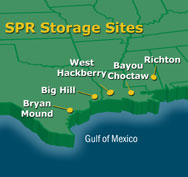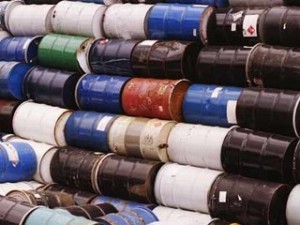 As gas prices continue to rise and in some areas across the country they are now over $4.00 a gallon, some are calling for oil to be released from the Strategic Petroleum Reserve (SPR) as a way to bring consumers relief. In fact, on average, gas prices are averaging 75 cents more per gallon than this week a year ago. However, the American Coalition for Ethanol (ACE) believes there’s a better plan.
As gas prices continue to rise and in some areas across the country they are now over $4.00 a gallon, some are calling for oil to be released from the Strategic Petroleum Reserve (SPR) as a way to bring consumers relief. In fact, on average, gas prices are averaging 75 cents more per gallon than this week a year ago. However, the American Coalition for Ethanol (ACE) believes there’s a better plan.
“People who are fascinated with tapping the SPR for additional gasoline should know that the U.S. ethanol industry annually produces the same or more fuel than the volume of gasoline we could refine from the SPR – except that ethanol is a renewable resource that is replenished every year thanks to American farmers and Mother Nature,” said Brian Jennings, Executive Vice President of ACE. “Drawing on the SPR might provide short-term relief, but once the SPR is tapped, that oil is gone, and the U.S. would have to spend billions of taxpayer dollars to resupply. Ethanol is the only commercially available alternative to oil today, and it costs less – E10 blends are already 15 cents per gallon less than unleaded.”
So how much gasoline is in the Strategic Petroleum Reserve? For starters, the SPR contains 727 million barrels of oil which equates to 34 days of oil at current average daily U.S. consumption levels of 21 million barrels a day (it’s slightly lower with the recession). These 727 million barrels will yield 19 gallons of gasoline per barrel or 13.8 billion gallons of gasoline. So at our current average use of 21 million barrels per day, we’d have about 65-66 days worth of gasoline or a little over 2 months worth. That’s it folks – two months. American ethanol producers supplied 13.23 billion gallons of fuel in 2010 or nearly the same amount that we have in our reserve – 10 percent of our yearly fuel supply.
 “There are much better solutions to provide consumers relief at the pump,” said Ron Lamberty, ACE’s Vice President / Market Development. “Allowing motorists to use 10.5 percent ethanol per gallon – only an extra half a percent – would boost the gasoline supply by the same amount as the 11 million barrels they released from the SPR after Hurricane Katrina. Or allowing motorists to use 12 percent ethanol per gallon would be four to five times more effective than the oil released after Katrina – not to mention the benefit to motorists’ pocketbooks since ethanol is more cost-effective than gasoline.”
“There are much better solutions to provide consumers relief at the pump,” said Ron Lamberty, ACE’s Vice President / Market Development. “Allowing motorists to use 10.5 percent ethanol per gallon – only an extra half a percent – would boost the gasoline supply by the same amount as the 11 million barrels they released from the SPR after Hurricane Katrina. Or allowing motorists to use 12 percent ethanol per gallon would be four to five times more effective than the oil released after Katrina – not to mention the benefit to motorists’ pocketbooks since ethanol is more cost-effective than gasoline.”
Lamberty notes that ethanol is currently selling at the rack for around 50 cents less per gallon than gasoline.
“America’s ethanol producers are ready, willing and able to supply more domestic, renewable fuel, but they are being blocked by bureaucracy and special interests supporting Big Oil and Big Food. Releasing oil from the Strategic Petroleum Reserve when we have 200 domestic producers of renewable fuel at the ready is senseless and short-sighted. Being satisfied with U.S. ethanol producers exporting homegrown fuel is not an option,” Jennings added.
Here is another interesting factoid: despite a Renewable Fuels Standard (RFS2) that calls for an increase in the use of ethanol, the U.S. is actually exporting ethanol today because the fuel market is locked at 90 percent petroleum and only 10 percent ethanol per gallon. The U.S. exported 397 million gallons of domestically produced ethanol during 2010, a four-fold increase over 2009. The U.S. EPA did approve E15 for use in vehicles 2001 and newer, but litigation and pending labeling requirements are preventing its implementation.

